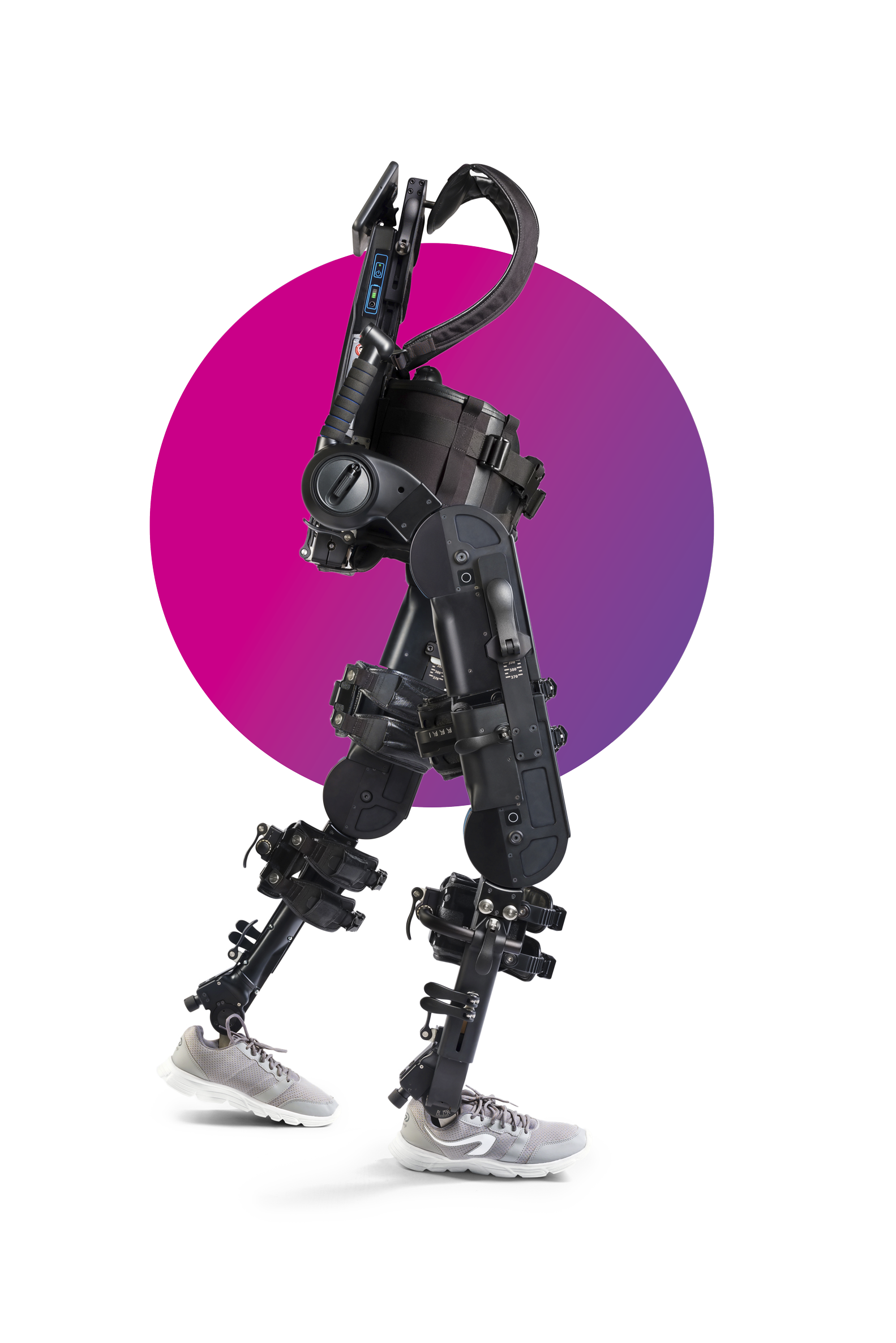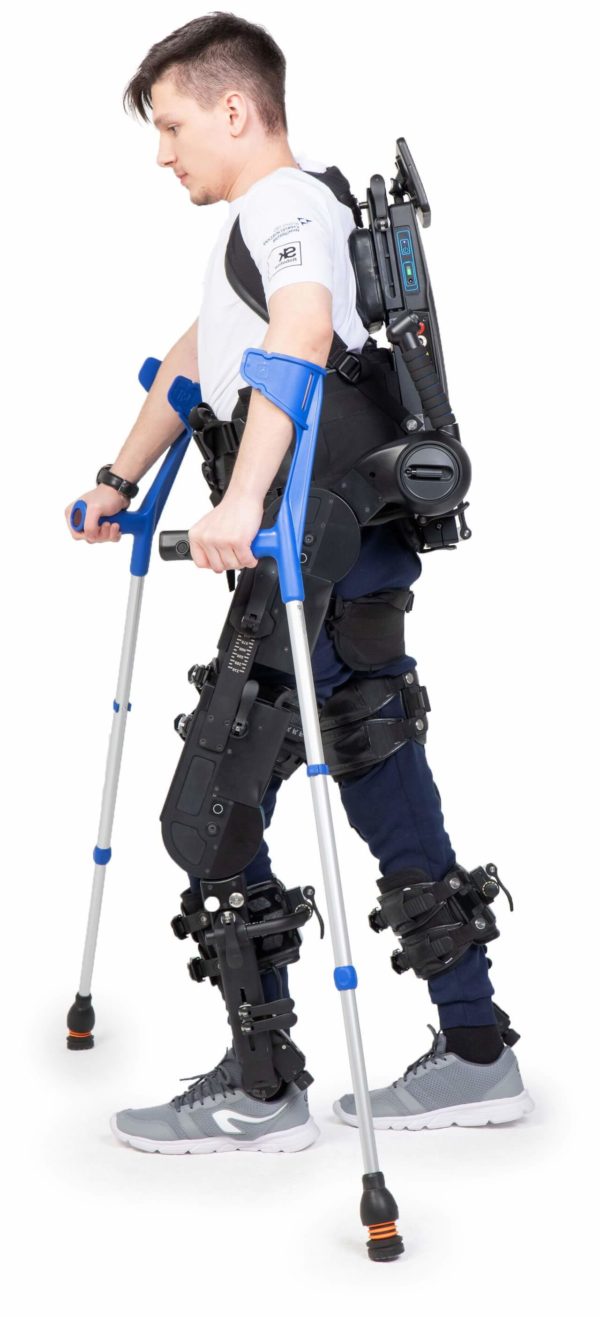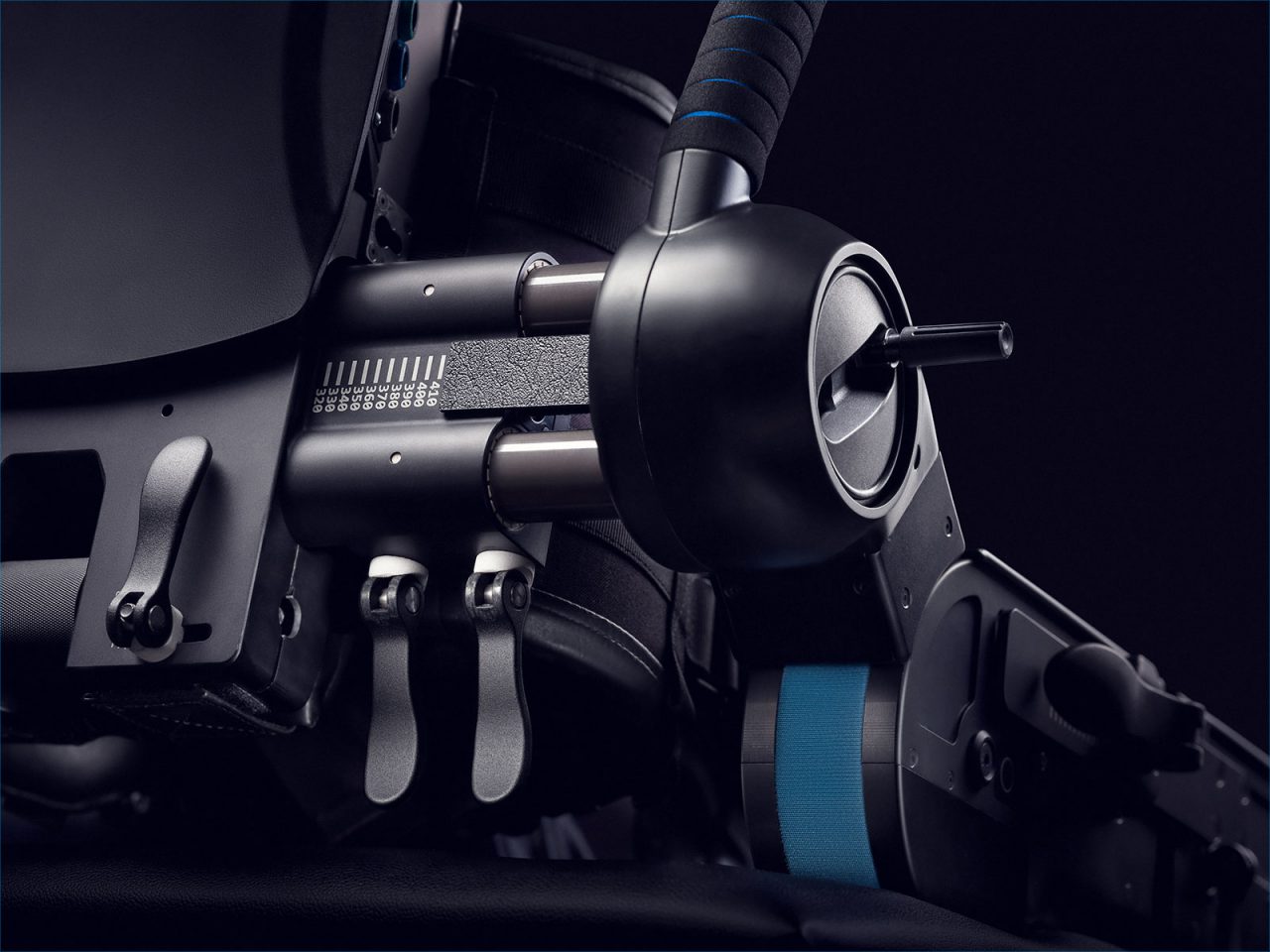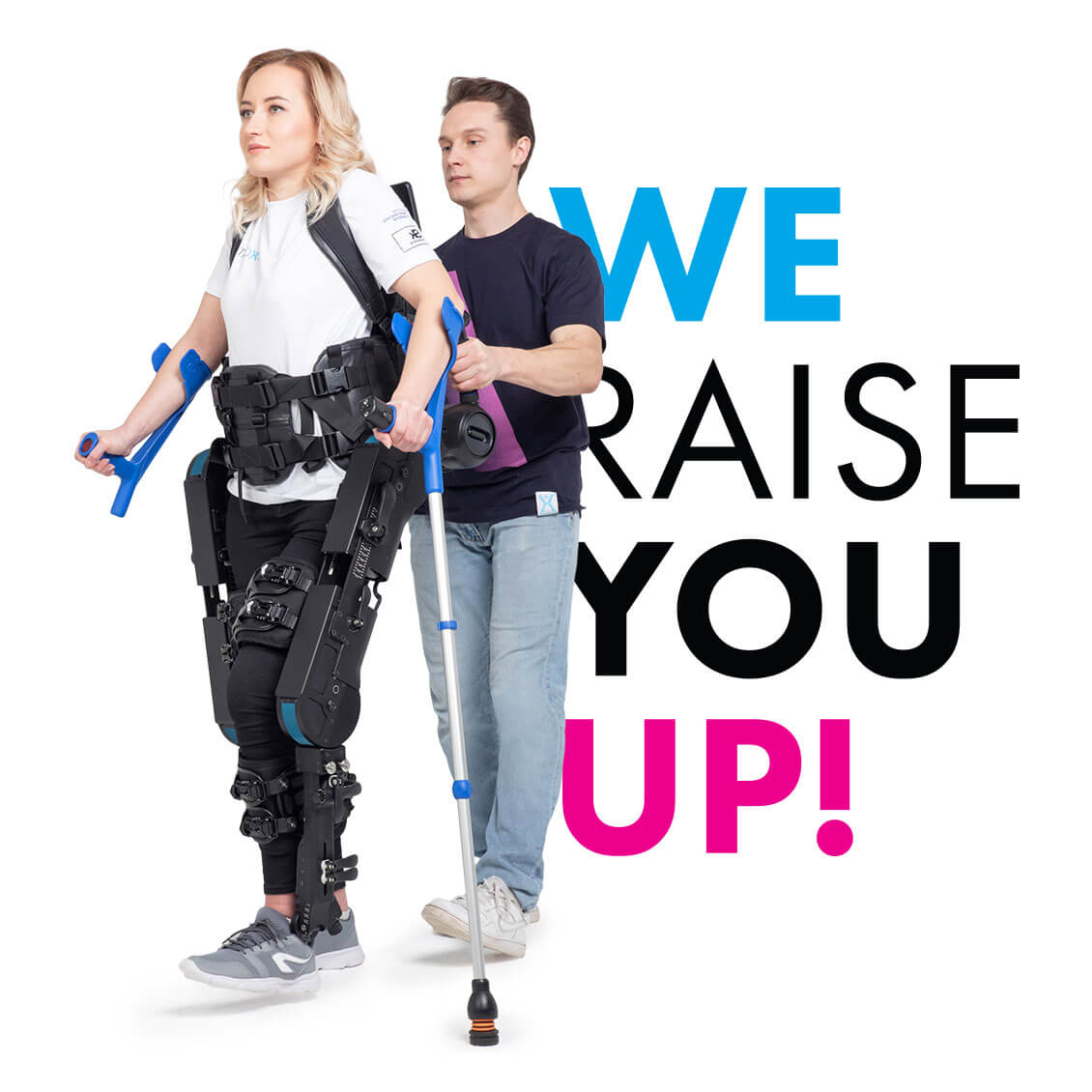
ExoAtlet II
is intended for use as a gait training and rehabilitation device to improve walking function and independence in patients with a neurological or muscular injury, illness, or weakness.Request a demo
Methods of control
— Smart crutch for a patient;
— Tablet for medical staff or an assistant.
Usability and safety features
— Natural gait pattern: accurate adjustment
for every patient;
— Ergonomic handles on the back for physical
therapists with the control button;
— Emergency shutdown & Spasticity Protection Unit;
— Back support for patients with cervical injuries;
— Ergonomic materials that are easy to clean;
— One battery charge is enough for a full day’s training;
— Adjustments don’t require any tools;

- up to 100 kg
– a patient’s weight - 160-190 cm
– a patient’s height

ExoAtlet II has 13 anthropometric settings, including adduction and abduction of the thigh and inversion and eversion of the foot. This allows individual adjustments for each patient’s physical conditions.
For patients with
— STROKE
— CEREBRAL PALSY
— SPINAL CORD INJURY
— MULTIPLE SCLEROSIS
— TRAUMATIC BRAIN INJURY
— and after ARTHROPLASTY

CE Mark and ISO:13485 certified, cleared by FDA.
EXOATLET
